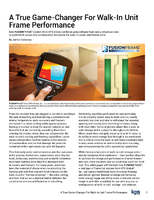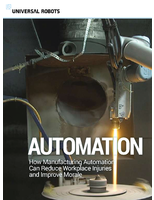TIA offers tips on how to make sure tires are safe.
Press Release Summary:
In addition to properly rotating tires on regular basis, TIA recommends performing visual inspection and checking tire pressure every month. Consumers should look for wear bars in tread grooves. Wear bars are 2/32 of an inch in height, so when surrounding tread blocks are worn even with wear bar, tires should be replaced. To check tread depth, consumers can use penny test. Also, temporary spare tires should not be used longer than recommended by manufacturer.
Original Press Release:
TIA Has Tips To Help Consumers
In This Tight Economy, Many Are Asking, "How Long Will My Tires Last?"
TIA Has Tips That Can Help Consumers Answer That Question
More people are deferring purchasing new tires because of the bad economic conditions; Tire Industry Association provides tips on how to make sure tires are safe and providing maximum efficiency.
Bowie, MD - With the economy seeming to decline a little more each day, an increasing number of consumers are deferring important maintenance to their vehicles, including replacing worn and/or damaged tires. According to the Tire Industry Association (TIA), not replacing worn and/or damaged tires can cost consumers money - and, potentially, their lives.
But, how can a consumer know when his/her tire should be replaced? Or, what should consumers be doing - and not doing when it comes to their tires? TIA recommends the following:
o Look for wear bars in the tread grooves. Every tire is constructed with wear bar indicators between the tread grooves. These wear bars are 2/32 of an inch in height, so when the surrounding tread blocks are worn even with the wear bar, the tire has 2/32 of an inch or less tread depth, so it should be replaced.
o Use the "penny test" to check for tread depth. The old test still works - place a penny in a major tread groove of a tire with Lincoln's head facing down. If the top of Lincoln's head is visible, it's a good sign that the tire needs to be replaced.
o Perform a visual inspection and check tire pressure every month. Look for any cracking and/or irregular wear, and make sure all tires are properly inflated. Drivers should check the owner's manual or the placard on the inside of the driver-side door to determine the correct inflation, and always check the pressure first thing in the morning, when tires are "cold."
o Do not use a temporary spare tire for longer than recommended by the manufacturer. Many people are using their temporary spare, or "doughnut," when a tire goes bad in the hope of delaying the purchase of a replacement tire. However, all "doughnut" spares are only designed for emergency use, and are NOT to be used as a day-to-day replacement tire.
According to TIA's Senior Vice President of Training, Kevin Rohlwing, "In addition to properly rotating their tires on a regular basis and making sure their tires are properly inflated, these simple steps can help consumers ensure that they are getting the longest life possible out of their tires. And, with the average price for a set of new tires continuing to rise, proper tire maintenance will have an even more significant impact on operating costs.
Rohlwing also advises that the consequences of not performing these simple steps can be disastrous - both to your wallet, and even your life. "Improper tire pressure is one of the biggest drains on fuel economy for all vehicles, and it has the potential to more than double tire costs over the lifetime of a vehicle. Most importantly, driving a vehicle with worn tires can have disastrous results, especially when road conditions are not favorable at highway speeds. And, in cases where a tire is so worn that the belt material is visible on either edge of the tread, the tire will soon fail at any speed at any time. A quick visual check of the tread surface on every tire could save someone's life."
For more information, visit www.tireindustry.org.
TIA is an international association representing all segments of the tire industry, including those that manufacture, repair, recycle, sell, service or use new or retreaded tires, and also those suppliers or individuals who furnish equipment, material or services to the industry. The Tire Industry Association (TIA) has a history that spans more than 80 years and includes several name changes. Originally known as the National Tire Dealers & Retreaders Association (NTDRA), the organization gave birth over the years to the American Retreaders Association (ARA) and the Tire Association of North America (TANA). ARA changed its name to the International Tire & Rubber Association (ITRA) and merged with TANA in 2002 to form the current Tire Industry Association (TIA), which now represents every interest in the tire industry.




